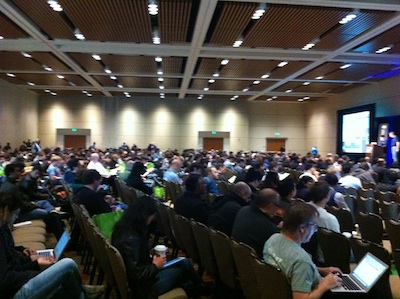During this year’s MongoSV, 10gen presented awards to peer-nominated community members for their contributions to the MongoDB project.
There were 3 different categories:
- Innovative Application Award - recognizes a company or individual who has built an innovative application using MongoDB.
- Core Contributor Award - recognizes a community member for significant contribution to the codebase of the MongoDB core server, language drivers, or tools.
- Community Champion Award - recognizes an individual for their efforts evangelizing and growing the MongoDB community.
This is the first year that 10gen has organized these awards. I think they’re a great way to recognize the contributions made by a few members of the community. I hope a significant portion of people in the community took the time to nominate or vote for another individual. I suspect more community members will participate and 10gen will do a more to advertise the program in years to come.
 I’ve been to a few other similar MongoDB events in NYC and DC but this was the largest by far. There were over 1,000 attendees and 5 tracks plus whiteboard and birds of a feather sessions.
I’ve been to a few other similar MongoDB events in NYC and DC but this was the largest by far. There were over 1,000 attendees and 5 tracks plus whiteboard and birds of a feather sessions.